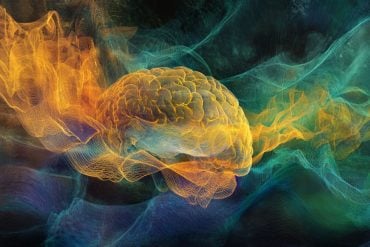Summary: White matter integrity appears to be reduced in people with major depressive disorders, a new Scientific Reports study reveals.
Source: University of Edinburgh.
Changes in the brain’s structure that could be the result of depression have been identified in a major scanning study.
Alterations were found in parts of the brain known as white matter, which contains fibre tracts that enable brain cells to communicate with one another by electrical signals.
White matter is a key component of the brain’s wiring and its disruption has been linked to problems with emotion processing and thinking skills.
The study of more than 3000 people – the largest of its type to date – sheds light on the biology of depression and could help in the search for better diagnosis and treatment.
Scientists at the University of Edinburgh used a cutting-edge technique known as diffusion tensor imaging to map the structure of white matter.
A quality of the matter – known as white matter integrity – was reduced in people who reported symptoms indicative of depression. The same changes were not seen in people who were unaffected.
Depression is the world’s leading cause of disability, affecting around a fifth of UK adults over a lifetime. Symptoms include low mood, exhaustion and feelings of emptiness.
Experts say the large number of people included in the sample – 3461 – means that the study findings are very robust.

Participants were drawn from UK Biobank, a national research resource with health data available from 500,000 volunteers.
The study forms part of a Wellcome Trust initiative called Stratifying Resilience and Depression Longitudinally (STRADL), which aims to classify subtypes of depression and identify risk factors.
Heather Whalley, Senior Research Fellow in the University of Edinburgh’s Division of Psychiatry, said: “This study uses data from the largest single sample published to date and shows that people with depression have changes in the white matter wiring of their brain.
“There is an urgent need to provide treatment for depression and an improved understanding of it mechanisms will give us a better chance of developing new and more effective methods of treatment. Our next steps will be to look at how the absence of changes in the brain relates to better protection from distress and low mood.”
The work – published in Scientific Reports – was carried out in collaboration with the University of Glasgow.
Funding: Support for the study was provided by the Wellcome Trust.
The authors report no financial or other conflicts of interest.
Source: Kate McAllister – University of Edinburgh
Image Source: NeuroscienceNews.com image is credited to Whalley et al./Scientific Reports.
Original Research: Full open access research for “Subcortical volume and white matter integrity abnormalities in major depressive disorder: findings from UK Biobank imaging data” by Xueyi Shen, Lianne M. Reus, Simon R. Cox, Mark J. Adams, David C. Liewald, Mark E. Bastin, Daniel J. Smith, Ian J. Deary, Heather C. Whalley & Andrew M. McIntosh in Scientific Reports. Published online March 21 2017 doi:10.1038/s41598-017-05507-6
[cbtabs][cbtab title=”MLA”]University of Edinburgh “Depression Changes Structure of the Brain.” NeuroscienceNews. NeuroscienceNews, 21 July 2017.
<https://neurosciencenews.com/depression-brain-structure-7143/>.[/cbtab][cbtab title=”APA”]University of Edinburgh (2017, July 21). Depression Changes Structure of the Brain. NeuroscienceNew. Retrieved July 21, 2017 from https://neurosciencenews.com/depression-brain-structure-7143/[/cbtab][cbtab title=”Chicago”]University of Edinburgh “Depression Changes Structure of the Brain.” https://neurosciencenews.com/depression-brain-structure-7143/ (accessed July 21, 2017).[/cbtab][/cbtabs]
Abstract
Subcortical volume and white matter integrity abnormalities in major depressive disorder: findings from UK Biobank imaging data
Previous reports of altered grey and white matter structure in Major Depressive Disorder (MDD) have been inconsistent. Recent meta-analyses have, however, reported reduced hippocampal grey matter volume in MDD and reduced white matter integrity in several brain regions. The use of different diagnostic criteria, scanners and imaging sequences may, however, obscure further anatomical differences. In this study, we tested for differences in subcortical grey matter volume (n = 1157) and white matter integrity (n = 1089) between depressed individuals and controls in the subset of 8590 UK Biobank Imaging study participants who had undergone depression assessments. Whilst we found no significant differences in subcortical volumes, significant reductions were found in depressed individuals versus controls in global white matter integrity, as measured by fractional anisotropy (FA) (β = −0.182, p = 0.005). We also found reductions in FA in association/commissural fibres (β = −0.184, pcorrected = 0.010) and thalamic radiations (β = −0.159, pcorrected = 0.020). Tract-specific FA reductions were also found in the left superior longitudinal fasciculus (β = −0.194, pcorrected = 0.025), superior thalamic radiation (β = −0.224, pcorrected = 0.009) and forceps major (β = −0.193, pcorrected = 0.025) in depression (all betas standardised). Our findings provide further evidence for disrupted white matter integrity in MDD.
“Subcortical volume and white matter integrity abnormalities in major depressive disorder: findings from UK Biobank imaging data” by Xueyi Shen, Lianne M. Reus, Simon R. Cox, Mark J. Adams, David C. Liewald, Mark E. Bastin, Daniel J. Smith, Ian J. Deary, Heather C. Whalley & Andrew M. McIntosh in Scientific Reports. Published online March 21 2017 doi:10.1038/s41598-017-05507-6







